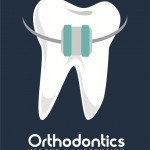
Nickel- titanium closing springs (NiTi-CS) and elastomeric power chains (EPC) are two common methods of achieving space closure during orthodontic treatment.
The aim of this review was to assess the effectiveness of NiTi-CS and EPC in orthodontic space closure and to evaluate the adverse periodontal effects, cost efficiency and patient-centred outcomes between both of these methods.
Methods
Searches were conducted in the Medline, Cochrane CENTRAL, Lilacs, Scopus, Web of Science, Embase, ProQuest Dissertation and Thesis database ,Opengrey, Clinical trials.gov, ISRCTN registry, National research registry, and Google Scholar databases without language restriction. This was supplemented by hand-searching of 8 orthodontic journals and reference list searches. Randomised controlled trials (RCTs) comparing with EPC and NiTi-CS were considered.
Two reviewers independently selected studies, abstracted data and assessed bias using the Cochrane risk of bias tool. Data were summaries for statistical pooling and a random effect meta-analysis was conducted. The overall quality of the evidence was assessed using GRADE.
Results
- 4 RCTs (2 – split-mouth , 2 parallel) were included.
- 1 study was considered to have a low risk of bias, 1 an unclear risk and 2 a high risk of bias.
- Faster space closure with NiTi-CS was observed with a mean difference of (0.20 mm/month, 95% CI: 0.12 to 0.28). This was seen in both split-mouth and parallel group subgroups.
- Loss of anchorage appears to be similar within both groups when synthesized qualitatively.
Conclusions
The authors concluded: –
There is a moderate quality of evidence suggesting a faster orthodontic space closure with the NiTi-CS when compared to EPC. A comparable amount of anchorage loss was observed regardless of the utilized method of space closure. Further high-quality RCTs with parallel-groups, reporting on the adverse effects and patient-centred values, are recommended.
Comments
While the authors have undertaken an extensive search for evidence only 4 small RCTs were included. The overall quality of the evidence for faster space closure was considered to be moderate using the GRADE criteria which means that further research could change this. The quality of the evidence for the loss of anchorage was low which indicated that further research is very likely to have an important effect on the estimate of effect. In addition, the clinical benefit (0.2mm/month) may be considered to be small. Although as the authors point out the cumulative benefit could be substantive. Other than the loss of anchorage no other adverse events e.g, periodontal effects or patient reported outcomes were reported.
Links
Primary Paper
Mohammed H, Rizk MZ, Wafaie K, Almuzian M. Effectiveness of nickel-titanium springs vs elastomeric chains in orthodontic space closure: A systematic review and meta-analysis. Orthod Craniofac Res. 2017 Dec 19. doi: 10.1111/ocr.12210. [Epub ahead of print] Review. PubMed PMID: 29265578.
Other references
Original review protocol in PROSPERO

[…] post Orthodontic space closure – Springs or chains? appeared first on National Elf […]